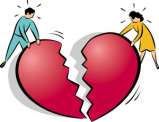Turning Down the Heat

Turning Down the Heat
It’s a very scary word. Nearly one million Americans suffer some form of this brain attack each year. The number one culprit? Hypertension, otherwise known as high blood pressure. Learn how you can keep your blood flowing smoothly for years to come.
By Susan Weiner, Energy Times
 Joseph Reiss was short and burly, with a full head of white hair and lively brown eyes. Like most street-tough New Yorkers of his generation, he was a self-reliant man with an unpredictable resume who, over the years, supported his family as a bus driver, ice cream shop vendor, gas station owner and barkeep. He smoked cigars, drank whiskey and black coffee, ate steak for breakfast and popped jalapeno peppers into his mouth as snacks, savoring each one like a sugared candy.
Joseph Reiss was short and burly, with a full head of white hair and lively brown eyes. Like most street-tough New Yorkers of his generation, he was a self-reliant man with an unpredictable resume who, over the years, supported his family as a bus driver, ice cream shop vendor, gas station owner and barkeep. He smoked cigars, drank whiskey and black coffee, ate steak for breakfast and popped jalapeno peppers into his mouth as snacks, savoring each one like a sugared candy.
One morning, Joe awoke to find that his speech was slurred, his movements awkward. The 68-year-old adamantly refused to see a doctor. Unable to feed himself or tie his shoes, and days after his right arm stopped working, his family—my family—brought him to a hospital. Over the next five months my grandfather deteriorated rapidly; he lost his ability to speak, developed agonizing bedsores and could not recognize some of us. In the end, withered and powerless to put thoughts into words, he died in his hospital bed.
“He was a walking time bomb,” says his daughter Terri. “He had a family history of heart disease, he had a terrible diet of white flour, meat, black coffee and salt, and he never went to a doctor.”
A lifetime of bad habits, a history of heart problems and his refusal to see a physician following not one stroke, but two, considerably lessened Joe’s chances for survival. Most significantly, my grandfather suffered from undiagnosed hypertension, known more commonly as high blood pressure, the single biggest risk factor for stroke.
Out of the Blue
A stroke almost always strikes abruptly and without warning: blurred vision, dizziness, confusion, loss of or trouble understanding speech, or sudden numbness or weakness of the face, arms or legs. Sometimes called a “brain attack,” a stroke is caused by a disruption in the amount of blood in the brain. Too little blood due to a clot or blockage results in an ischemic stroke (80% of all strokes are this type); a hemorrhagic stroke occurs when an artery suddenly ruptures, flooding the brain cavity with blood.
Since blood pressure is determined by the amount of blood your heart pumps and the amount of resistance to blood flow in your arteries, your blood pressure is directly tied to risk of stroke. “High blood pressure is essentially increased pressure on the walls of the blood vessels of the body,” explains J. David Forbes, MD, founder and director of Nashville Integrated Medicine and board-certified founding diplomate of the American Board of Holistic Medicine (ABHM).
Your blood pressure consists of two numbers: The top number indicates systolic pressure, or the amount of pressure your heart generates when pumping blood through your arteries, and the bottom number indicates diastolic pressure, or the amount of pressure in your arteries while your heart is at rest between beats. The consenting viewpoint of the Joint National Committee on Prevention, Detection, Evaluation and Treatment of High Blood Pressure (JNC), a coalition of 46 health care agencies, is that a blood pressure reading of 115/75 mmHg should be the new gold standard. Once you rise above that threshold, risk of stroke increases.
For those with untreated high blood pressure, stroke risk is high: Of the 730,000 Americans who endure a stroke each year, more than half suffer from high blood pressure. Of the estimated 50 million Americans who currently have high blood pressure, 30% don’t even know they have it. Like a ticking bomb, hypertension damages blood vessel walls, promoting the buildup of plaque deposits or the likelihood that a vessel will break due to excess pressure.
Heart Hazard
People of all ages, including children, are affected by high blood pressure so whether you’re 20 or 60, hypertension poses a significant danger. Women are at particular risk: Stroke occurs with roughly equal frequency among both genders, but women are more likely to have a stroke in their 40s or 50s and are more likely to die as a result. In fact, two-thirds of women who die suddenly from cardiovascular disease, including stroke, have no previous recognized symptoms. Many of these women, however, carry excess weight; the American Heart Association (AHA) reports that women inclined to accumulate fat around the middle have almost a fivefold increased risk of fatal cardiovascular events.
Across the board, overweight men and women with high blood pressure have double the risk for fatal stroke than overweight people with normal pressure. “We observed that cardiovascular risk is not clearly increased unless hypertension is present in overweight and obese subjects,” says Athanase Benetos, MD, PhD, who conducted a 14-year study of nearly 250,000 French men and women.
Another very important analysis, the Framingham Heart Study, continuously followed a group of 3,128 men and women. The study found that those with normal blood pressure live longer and spend more years free of stroke and other cardiovascular disease, underscoring the association between high blood pressure and shorter life expectancy. Lead researcher Oscar Franco, MD, DSc, says, “This emphasizes the need to improve blood pressure control.”
Work It Out
Hypertension isn’t the only culprit when it comes to stroke risk; other medical conditions, including diabetes and high cholesterol, also increase the chance of stroke. Swings in blood glucose slowly damage blood vessels, while cholesterol deposited in blood vessel walls build up and clog arteries, leading to atherosclerosis. Promisingly, these conditions—like hypertension—can be controlled or influenced by lifestyle factors.
“If there’s a magic elixir in life, exercise would be it,” says Forbes. “Regular exercise reduces hypertension as well as virtually every other modifiable risk factor. Almost every study that has been done looking at exercise and disease conditions shows an improvement in that condition with exercise.”
Aerobic exercise can lower blood pressure, increase HDL (good) cholesterol, control diabetes and improve overall cardiovascular health. For the uninitiated, gradually working up to 30 minutes or more a day of walking, jogging, bicycling or swimming can dramatically diminish stroke risk.
Compared with people with low levels of physical activity, the risk of ischemic stroke is 20% lower for those who are highly active and 13% lower for those who are moderately active. Even those who exercised for only one to 29 minutes daily had an 8% lower stroke risk, proving that any exercise helps.
Eating for Life
A protruding tummy is not just aesthetically unpleasing. Obesity leads to a greater output of blood, since the heart has to pump out more blood to supply the excess tissue. The result: higher blood pressure. Fortunately, losing as little as 10 pounds can drop blood pressure and improve cholesterol and insulin levels.
The DASH (Dietary Approaches to Stop Hypertension) eating plan, endorsed by the National Institutes of Health (NIH) and recommended for everyone in the 2005 Dietary Guidelines for Americans, is rich in fruits, vegetables, grains, nuts, beans, lean proteins and low-fat or nonfat dairy.
The DASH diet is considered flexible enough to meet most lifestyle and food preferences.
A diet high in soybean proteins, nuts and plant sterols can lower cholesterol and reduce stroke risk just as effectively, says the American Heart Association. Studies show that the diet is as efficient at lowering cholesterol and C-reactive protein, a blood marker of impending stroke or heart disease, as statin drug treatment.
“Dietary change, exercise and weight loss are the primary places to focus,” says Forbes, who proposes an anti-inflammatory diet high in omega-3 fat-rich foods such as salmon, halibut, mackerel and flax seed. “A diet that is low in saturated and trans fats, sugar, caffeine and refined carbohydrates, moderate in alcohol, and high in fresh fruits and vegetables, fiber, whole grains and anti-inflammatory foods can have a dramatic impact on the risk factors of stroke.”
A moderate reduction in salt intake may also contribute to lowering blood pressure, though not all individuals with high blood pressure are responsive to sodium reduction. Still, the NIH recommends moderate salt intake for all Americans to help prevent or treat hypertension.
Vitamins Against Stroke
Dietary supplements are another effective weapon in the crusade against stroke—especially antioxidants. Researchers in Neurology report, “Our results agree with the view that high dietary intake of antioxidants, in particular vitamin C and vitamin E, reduces the risk of stroke.” Scientists from Columbia Presbyterian Medical Center (CPMC) of New York Presbyterian Hospital found a person’s risk of stroke is reduced by 53% by taking a vitamin E supplement each day.
Studies show a correlation between low levels of vitamin B6 and incidence of stroke, signifying a relationship between inflammation and low B6 status. Researchers suggest that, in lieu of a B6 capsule, it is preferable to take a multivitamin tablet that contains at least two milligrams of B6.
While you can’t control some major stroke risks, such as age and family history, you can control such factors as weight, exercise and diet, tobacco use and stress. Even if you can’t escape a stressful job, researchers have good news: A supportive home life can help lower the negative impact of stress on a person’s blood pressure.
Had my grandfather taken these proactive steps, his story might well have had a different ending. A lifetime of bad habits can’t be erased overnight, but preventative measures can head off high blood pressure and stroke in the long run.


